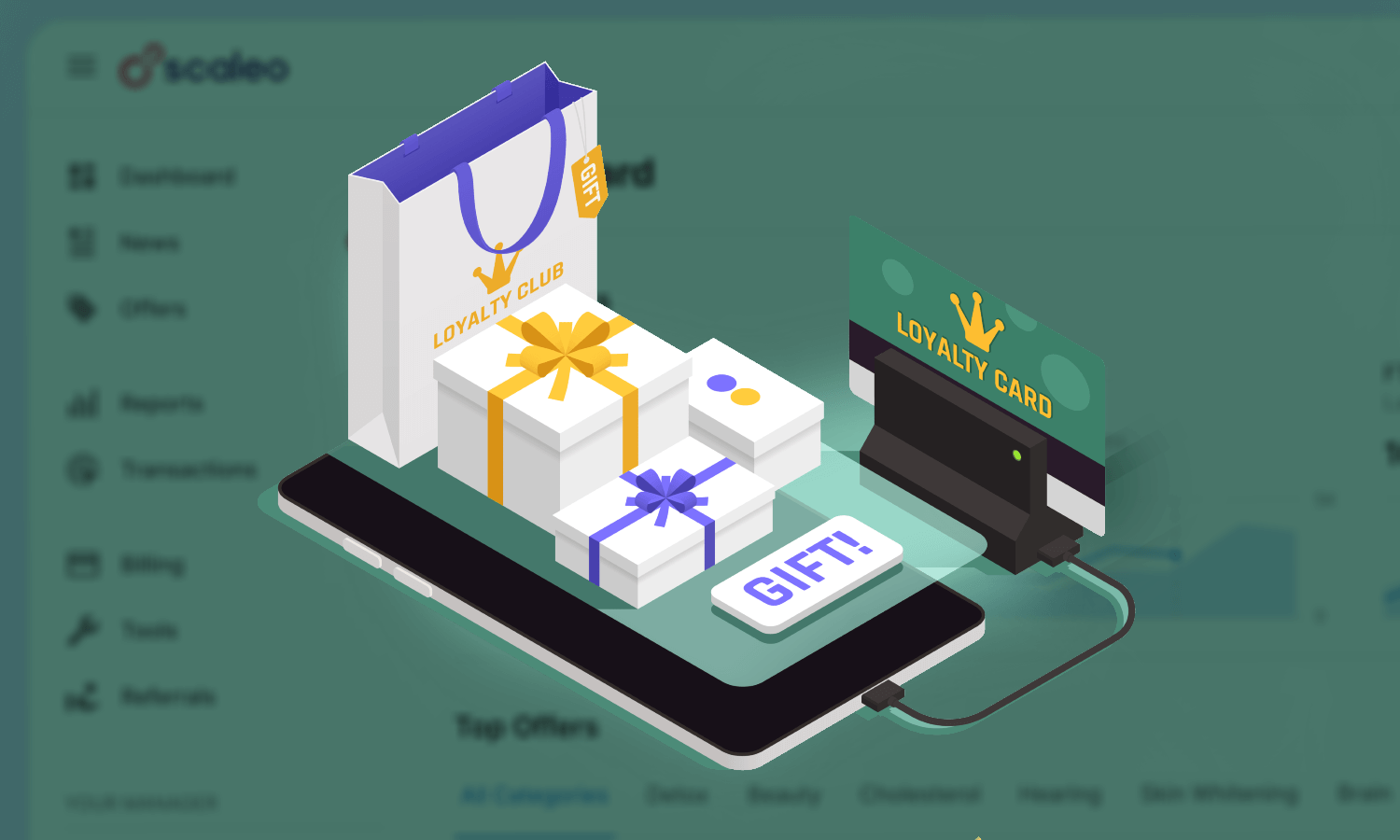As a business owner, you know that loyalty programs are essential to your customer retention and loyalty strategy. A loyalty program allows you to reward customers for their purchases and give them incentives to keep coming back to your store.
The right program can create a sense of trust and community with your customers, as well as increase sales, brand loyalty, and repeat purchases.
But creating and managing a successful loyalty program can be tricky. You need to consider the structure of the program, promotional offers and rewards, which type of technology you should use, and how to track performance.
This guide will walk you through the process of designing your own loyalty program from start to finish. We’ll cover everything from brainstorming ideas to setting up the program and tracking performance metrics. With this guide, you’ll have all the tools you need to create a successful loyalty program that will help drive sales and customer loyalty for years to come.
Understanding What Works for Your Business
Building a successful loyalty program starts by understanding what works best for your business. Loyalty programs come in a wide range of forms, from discounts and promotions to rewards for referrals and more. It’s important to determine which strategies are right for you.
Think about your customer base and the types of rewards they would appreciate. Do your customers prefer discounts or free gifts? Would they be motivated by earning points that can be used toward future purchases?
Consider which options make the most sense for your business and create a plan to get started.
You should also delineate what actions you want to incentivize.
- Are you looking to reward customers who shop regularly?
- Or those who communicate with their networks about your product or service?
Make sure each action has a clear reward that creates an incentive to participate in the program.
What are some of the most popular types of incentives?
When it comes to loyalty programs, you have several options. Here are some of the most popular types of customer incentives:
- Points and rewards: This program is popular because it’s simple and effective. Customers accumulate points for every purchase they make, which they can then redeem for free merchandise or discounts.
- Referral programs: Reach new customers by offering existing ones incentives for referring friends or family to your business. Examples of these incentives could be discounts, gift cards, or even free products.
- Personalized offers: Sending customers personalized offers based on their purchase history or preferred product categories increases the probability that they will make a repeat purchase.
- Subscription promotions: If you offer recurring services, consider incentivizing customers with subscription-based promotions such as discounts or additional perks for signing up for a longer subscription period.
Ultimately, it’s important to cater to both your business goals and customer preferences when selecting loyalty program incentives that will give your program an edge over the competition.
Building a Rewards Structure That Resonates
Once you’ve identified the type of loyalty program you want to implement, it’s time to create a rewards structure that resonates with your customers. To get started, define how members will earn and redeem their rewards.
Start by selecting an appropriate currency for your program.
Will customers earn points for spending or a more traditional reward system? This decision is key, as it directly influences the success of your program—if the rewards structure doesn’t feel valuable to customers, they’re unlikely to participate.
Also, consider how much each reward should cost in terms of points or rewards currency. This helps determine the value of each point earned (i.e., if a customer earns 10 points per dollar spent, each point is worth 10 cents). When creating a rewards structure, set the values high enough that customers actually want to take action to earn them but low enough that they still feel achievable.
Most importantly, make sure your rewards system fits within your budget—if cashback is an expensive commodity for you to give out, consider alternatives such as free product samples or discounts on future purchases for certain milestones achieved by members. Be creative and think outside the box—your loyalty program should be tailored specifically for your customers’ needs and interests!
Customer Incentive Program Ideas
Creating a customer incentive program is one of the best ways to build loyalty and improve customer retention. Your program should be tailored to your audience, but here are some ideas that have been proven successful across business types:
- Free credits – This can be used as an incentive for customers to recommend your product or service. For example, offering a $10 credit for every referral helps reward customers who bring in new business.
- Beta access – If you’re in a subscription-based model, give customers early access to new features or content before other customers.
- Branded swag – Give exclusive products or limited-edition swag with every purchase as an extra reward for loyal customers. It’s a great way to show appreciation and create excitement around your brand.
- VIP discounts – Give loyal customers additional discounts on future purchases, such as 25% off their next order. It’s an effective way to thank your most loyal customers and encourage them to buy more from you.
- Extra rewards – Beyond discounts, consider offering special loyalty rewards that can only be earned through your program. This could include exclusive offers and prizes like free product trials or vouchers for discounts on other products and services.
Developing a Loyalty Program Strategy
Creating a loyalty program requires careful thought and planning. Offering customer incentives that encourage customers to keep coming back requires the right combination of rewards, exclusivity, and convenience. Here are some tips to help you develop a loyalty program strategy that will work for you:
Understand Your Customers
Before you can create an effective loyalty program, you need to first understand who your customers are and what motivates them.
Do they value rewards or discounts? Are they motivated by exclusive access to events or products? Knowing your customers’ motivations will help you create a loyalty program that is tailored to their needs.
Establish Goals
It’s important to define your goals before launching your loyalty program. What do you want to achieve with the program? Do you want to increase sales, reward frequent purchasers, or boost customer retention? Knowing your desired outcomes will help inform the type of rewards you offer and the criteria for awarding points.
Set Rules & Criteria
When creating a loyalty program, it’s important to establish rules and criteria for awarding points so that customers know what they have to do in order to claim rewards. A clearly defined set of rules will help ensure that everyone is on the same page and understands how the Loyalty Program works.
By following these steps, you can develop an effective loyalty program strategy that will attract new customers, reward existing ones, and increase customer retention over time.
Integrating Your Loyalty Program Into Your Business Processes
Integrating your loyalty program into your business processes is essential for success. It enables you to increase customer engagement and create a system for rewarding customers for their loyalty. Here are some tips for integrating your loyalty program into your business processes:
- Design the Program Structure: Develop a plan for how customers will earn rewards and create rules for redeeming points and other benefits.
- Integrate with Automated Systems: Set up automated systems such as marketing automation, email campaigns, and point-tracking apps to make it easier to keep track of customers’ interactions with your loyalty program.
- Create a Support System: Establish a customer service team and provide training on the loyalty program structure so they can answer questions from customers and help troubleshoot any issues that arise with points or rewards.
- Track Customer Trends: Pay attention to customer trends, such as which types of rewards are the most popular among customers, so you can use this knowledge to adjust your loyalty program accordingly.
- Monitor Performance Metrics: Monitor performance metrics such as customer loyalty, spending habits, and frequency of visits to better understand how effective the loyalty program is at engaging customers.
Growing Your Loyalty Program With Partner Marketing
You can also achieve greater loyalty program visibility by engaging partners to promote your program. Partner marketing for loyalty programs offers multiple benefits, such as:
- Increased Reach and Visibility: Your partner’s network provides an additional platform to reach new potential customers and spread the word about your loyalty program.
- Improved Customer Engagement: Partnering with companies that offer complimentary products or services can provide additional value for customers. This could include discounts on partner products or exclusive rewards available only through partner channels.
- More Effective Use of Resources: Partner marketing allows you to tap into another company’s resources, such as its sales force, customer service team, or marketing talent, without having to invest fully in building an internal team of experts.
Your partner may be willing to promote your loyalty program in exchange for payment or a share in the profits it generates, so be sure to negotiate a beneficial arrangement prior to entering any partnership agreement. Additionally, leverage analytics tools such as Google Analytics and A/B testing to measure the success of your partner promotions and adjust your strategy as necessary.
Measuring the Success of Your Customer Incentives Program
Measuring the success of a customer incentives program is essential to ensure it is achieving the desired results. You want to make sure that you are not only building loyalty amongst your customers but also improving customer retention. Here are a few tips for measuring the success of your program:
- Monitor Program Engagement – Track the number of customers who utilize your loyalty program and the rewards redeemed to determine its engagement rate.
- Observe Customer Profitability – Monitor how much more customers are spending compared to non-loyalty members to determine if customer profitability is increasing as a result of customer incentives.
- Analyze Program Cost – Measure the cost of running your loyalty program against its returns to determine its overall effectiveness.
- Sample Customers’ Opinions – Ask customers for feedback on their experience with your incentive program and use their insights to refine or improve it over time.
By taking these steps and tracking the results, you will be able to gauge how successful your customer incentives program truly is and make adjustments accordingly if needed.
Ready to Start A Loyalty Program and Increase Customers Retention?
If you want to build a successful loyalty program for your company, try Scaleo for 14 days free! Scaleo can help you establish and manage your loyalty program more efficiently with its flexible commission structures, automated tracking and reporting, and customizable tracking parameters.
Don’t pass up this chance to improve your marketing efforts and increase customer loyalty.
Try Scaleo right now!

Conclusion
To sum up, designing your own loyalty program requires careful thought and planning.
Starting with a well-articulated customer segmentation process is a good first step to ensure the program is designed with the right target audience in mind. Set goals that are achievable and measurable, and utilize customer data to create meaningful and reward-focused partnerships.
It’s important to also think about the incentives you’ll employ and how they will be integrated into your loyalty program.
Finally, consider the user experience of your loyalty program and look for ways to add value and interactivity for your customers. With careful planning and strategy, you can develop a loyalty program that delivers great value and turns customers into loyal brand advocates.
Last Updated on January 19, 2024







